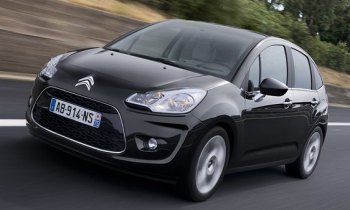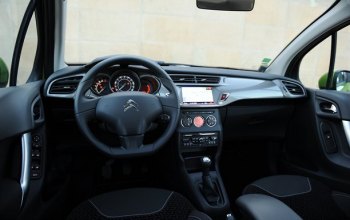Citroen C3
Debut: 2009 |
||||||||
From the late 1990s to early 2000s was the era of retro design. Volkswagen kickstarted the era with new Beetle. Ford revived its long forgotten Thunderbird. Chrysler produced PT Cruiser. BMW reintroduced Mini. Citroen joined the party with C3, a supermini whose styling inspired strongly by the legendary 2CV. In the beginning, we applauded and got immediately in love with the new 2CV. It was not only funky, but spacious, safe and easy to handle. Handling was not its strongest suit, but neither was the original 2CV. Unfortunately, we didn't take long to see its parts fell off. Its shinny hard plastics became eyesores when new generation rivals emerged. They made the little Citroen felt outdated. Eventually, 2 million units of C3 were sold in the following seven years. Not bad, but rivals were better. In the new generation C3, Citroen's number one job is to lift its build quality - both visually and actually. While its exterior design is loyal to the original – look at that tall body and arc roof – the quirkiness has dialed back a bit in exchange for some maturity. You can see finer assembly gaps, better finished paint and an attention to details unseen before, such as the chromed lining beneath the side windows and tailgate and surrounding the front intake. Front and tail lights look more stylish and high-quality. These improvements come from the progress of manufacturing technology as well as the work of its stylists.
In the cabin, the improvement is even more spectacular. The dashboard now appears classy. Like the best built European superminis, its dash top is made of soft plastics, the whole architecture feels solid and the switch gears operate without slack. A unique kind of windscreen called "Zenith" extends to the middle of the roof to give a light and airy ambience, freeing the already generous headroom. Not only feels good, this cabin is also practical to use. The new dashboard, which shares its basic architecture with the forthcoming DS3, is logically laid out to ease your access to main functions. The front seats provide plenty of room for tall guys. Rear space is competitive, although legroom is not the longest in the class. The latter is a compromise of an unchanged wheelbase and a larger, class-leading 300-liter boot. Mechanically there is little surprise for the PSA supermini. Once again it shares platform with Peugeot 207. Suspension is predictably struts up front and torsion beam at the back. Steering is powered electrically. The chassis is a little longer, wider and taller than before. In addition to vastly enhanced sound insulation, it means more weight – although Citroen said otherwise. A 1.6-liter petrol engine new C3 is about 90 kg heavier than its direct predecessor. But that doesn't matter, because the BMW-sourced engine, with all-alloy construction, variable cam-phasing and Valvetronic, is far more eager to rev than the late PSA 1.6 16V. It is also more powerful, with 120 horsepower on offer, so performance is actually stronger than the old car. Not as good is the 5-speed manual gearbox. Not only has an imprecise gearshift, but it also cries for a 6th gear to calm down its highway cruising.
Budget buyers may choose from an underpowered 1.1-liter (60hp) and 1.4 HDi (70hp). If you need proper performance and tractability, then the pair of 1.6 HDi will be better. They produce either 90 hp with fixed turbo or 110 hp with variable geometry turbo. However, it is the cheaper one that is expected to be the best seller of the range. It propels the C3 from rest to 60 mph in 10 seconds and returns 65 mpg. Undoubtedly, the C3 is not designed to please keen drivers. That task is taken by its Peugeot sister and in the future DS3 as well. What the C3 emphasizes is comfort. Its combination of soft-riding suspension and good sound insulation delivers high level of refinement for the class. The 1.6 VTi and 1.6 HDi engines are quiet unless you push hard. The steering is light, and the handling is once again safe and easy. Less demanding drivers will be delighted with how it runs and steers. To be fair, the new C3 is far more agile than the old car, but compared with Ford Fiesta it rolls too much, understeer too early and bounce over bumps too eagerly. If you pursue pleasure purely from driving, nothing could be a better bet than the Fiesta. However, if you ask for relaxing ride, practicality and economy, the Citroen will be a strong case. Better still, it is now boosted with real quality.
|
||||||||
| The above report was last updated on 3 Nov 2009. All Rights Reserved. |
| Specifications | |||||||||||||||||||||||||||||||||||||||||||||||||||||||||||||||||||
|
|||||||||||||||||||||||||||||||||||||||||||||||||||||||||||||||||||
| Performance tested by: - |
Copyright©
1997-2009
by Mark Wan @ AutoZine



